Introduction
In 3D printing, parts are built layer by layer, and each of these layers needs a base to rest on. Depending on the 3D printing technology used and the complexity of the model, support structures may need to be employed.
Considering the use of support structures is critical when choosing 3D printing technology. These support structures directly affect the final result, especially in terms of surface finish. In fact, removing support structures during post-processing can leave imperfections or roughness on the surface of the printed part.
In this article, we will explore what support structures are, how they are implemented in different 3D printing technologies, and how their use can influence design decisions.
Supports in FDM Printing
Printing Fused Deposition Modeling (FDM) works by extruding a molten filament onto a build surface following a predetermined path. Once extruded, the material cools and forms a solid surface that serves as a base for the next layer of material. This process is repeated layer by layer until the object is completed.
When is Support Needed in FDM Printing?
In FDM printing, each layer is printed as a set of heated filaments that adhere to the underlying and surrounding filaments. Each strand is slightly offset from the previous layer, allowing models to be built at angles up to 45°. This allows the prints to extend beyond the width of the previous layer.
However, when a part of the pattern has an overhang greater than 45°, the material tends to collapse. In such cases, support material must be added below the overhang to adequately support it. For more information on overhangs and FDM printing, click here.
Examining the use and removal of support structures is crucial to improving quality and optimizing 3D printing costs.
Depending on the degree of overhang, FDM printing may need support.

Figure: Example of lower and upper 45° overhang. ©3DHUBS
Supports in FDM Printing: Bridging vs Supporting
When 3D printing using FDM technology (Fused Deposition Modeling ), the degree of overhang of a model may determine the need for additional supports.
However, there is a technique called bridging that can reduce the need for supports in some situations.
Bridging
Bridging is a technique for printing material over short distances between two points without using supports. During this process, the molten material is stretched horizontally and cooled while it is between two support points. This technique is effective for relatively short distances, usually up to about 5 mm. If the bridge exceeds this length, the material is likely to warp or sag, necessitating the use of supports to ensure a smooth and precise surface finish.
The ABCs (or YHTs) of FDM Support.
To better understand how and when to use supports, we can consider some representative 3D models, using the letters Y, H, and T as practical examples.
-
Letter Y: The Y-shaped model is an example of a design that can be printed without additional supports. The arms of the letter Y, which extend at an angle of 45 degrees or less, do not require support because they are angled enough to allow the material to adhere properly without deforming.
-
Letter H: The H-shaped model has a somewhat more complex configuration. The horizontal center bridge of the H can be printed without support only if its length is less than 5 mm. If the center bridge exceeds this length, the material tends to sag or warp, so it will be necessary to add supports to maintain stability and achieve a high-quality surface finish.
-
Letter T: The shape of the letter T requires supports for its horizontal arms. Without support, the material that makes up the horizontal arms would have no support and would give way, resulting in a low-quality print. Supports are needed to prevent the material from falling off and to ensure that the arms of the T are printed correctly.

Figure: YHT with support material shown in light gray. ©3DHUBS
The decision to use supports in FDM printing depends on the geometry of the model and the specific printing requirements. Bridging is a useful technique for short distances, but for more complex structures or significant protrusions, supports are essential to achieve high-quality results.
Understanding how and when to apply supports will help you optimize the printing process, improving the quality of the finished part and potentially reducing the costs associated with 3D printing.
What YHTs look like when printed
To better understand the impact of using or not using supports in FDM 3D printing, let's look at how the Y, H, and T patterns look when printed.
In the image below, you can see the result of printing the letter T without the use of supports. As you can see, the surface shows significant failure, with the material having collapsed and deformed under the weight of the horizontal arms. This defect will require a considerable amount of post-processing to remove the imperfections and achieve a smooth, clean finish.
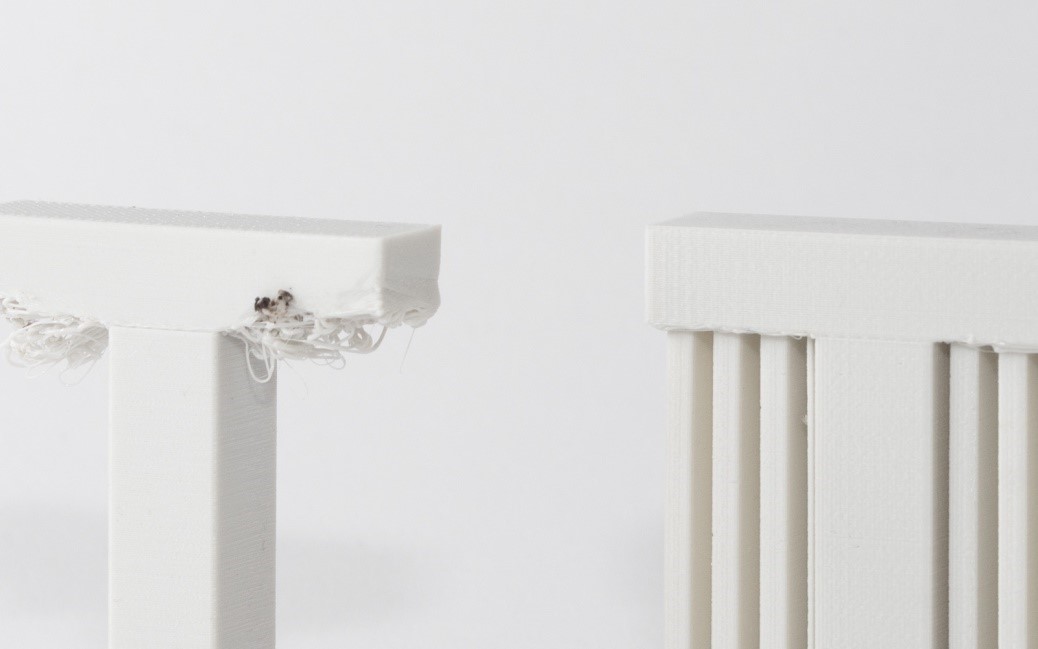
Figure: The letter T fails when printed with FDM without any support structure. ©3DHUBS
The visible failure in printing the T underscores the importance of using supports for models with protrusions or complex structures. Without proper supports, the material tends to sag, compromising the final quality of the printed part. Using the correct supports can prevent such problems and reduce the time and effort required for post-processing.
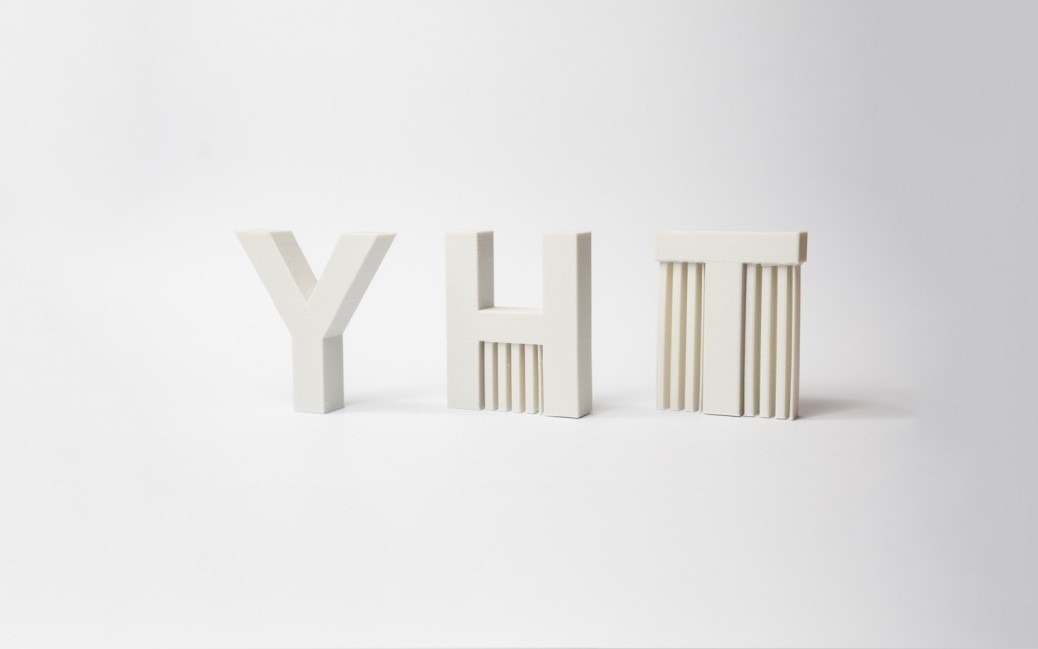
Figure: Y, H and T printed using FDM with supports. ©3DHUBS
The Downside of Using Media in FDM Printing.
The use of media in FDM printing has some disadvantages that are important to consider:
-
Post-Processing Necessary: One of the most problematic aspects of media is that post-processing is always necessary. After printing, the surface of the model that has been in contact with the media may show visible marks or damage. This requires additional work to smooth and clean the surface, compromising the final result.
-
Inferior Layer Quality: Layers printed directly on top of the substrate may be less perfect than layers printed on a solid surface. Because the substrate is not as stable as the underlying material, it can cause imperfections and a less uniform surface finish.
-
Difficulty of Removal: Removing backing from small, complex features can be particularly difficult. Removing backing in these areas risks damaging the model, especially if not done carefully.
-
Additional Costs: Using media requires additional printing materials, which incurs additional costs. In addition, media removal requires extra labor from the 3D printing service provider, further increasing the total cost of the project.
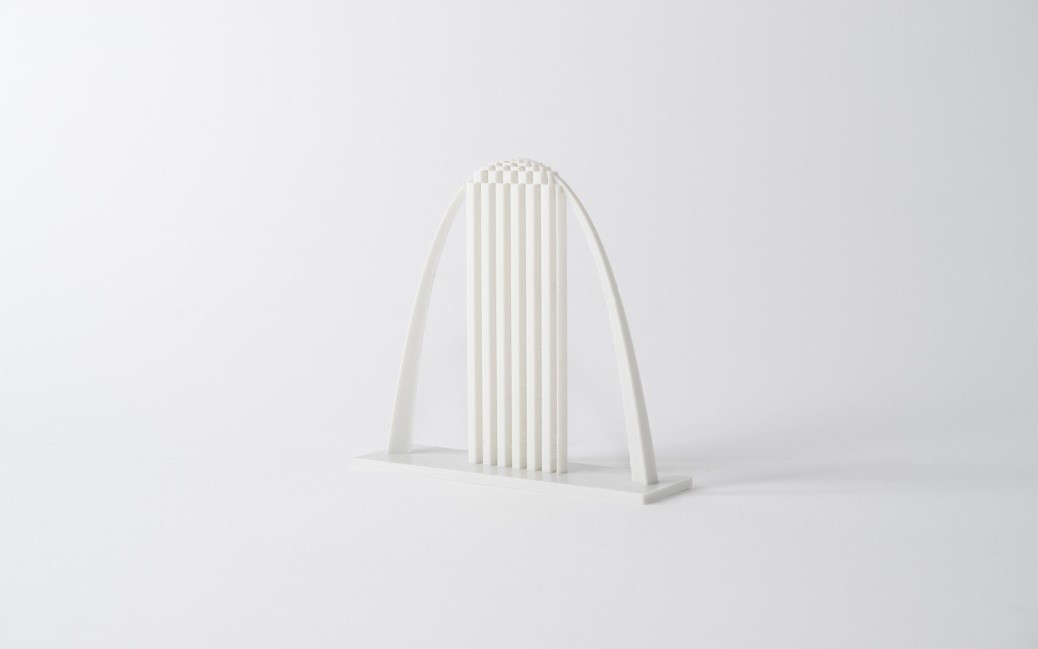
Figure: St. Louis Gateway Arch shows the perfect example of using support with an arch-shaped object. ©3DHUBS
How much Support is Needed for My FDM 3D Printing?
The amount of support needed depends on the specifics of the model and its geometry. For example, consider the architecture of a part that requires only a limited amount of support, strategically placed in the correct location. This reduced amount of support allows for accurate printing while minimizing the problems associated with post-processing and additional costs.
Carefully analyzing and planning the use of media can help achieve better and more efficient 3D printing results while minimizing associated quality and cost issues.
For example, the "Ball in a Cube" is a component that requires a large amount of media.

Figure: Close-up of the "Ball in a Cube" Print with Supporting Structure. ©3DHUBS
The Removal of Support: A Complex Challenge.
In the case of the example provided, support removal is a particularly complex task. Each support element must be precisely extracted using needle-nose pliers, while trying to minimize damage to the surrounding surfaces. This removal step requires great care to avoid compromising the quality of the final model.
In addition, sanding and cleaning the surface after media removal can be very difficult. Surfaces in contact with substrates may show signs of roughness and imperfections that require careful work to repair. This process is not only laborious, but can also require specialized equipment and additional time.
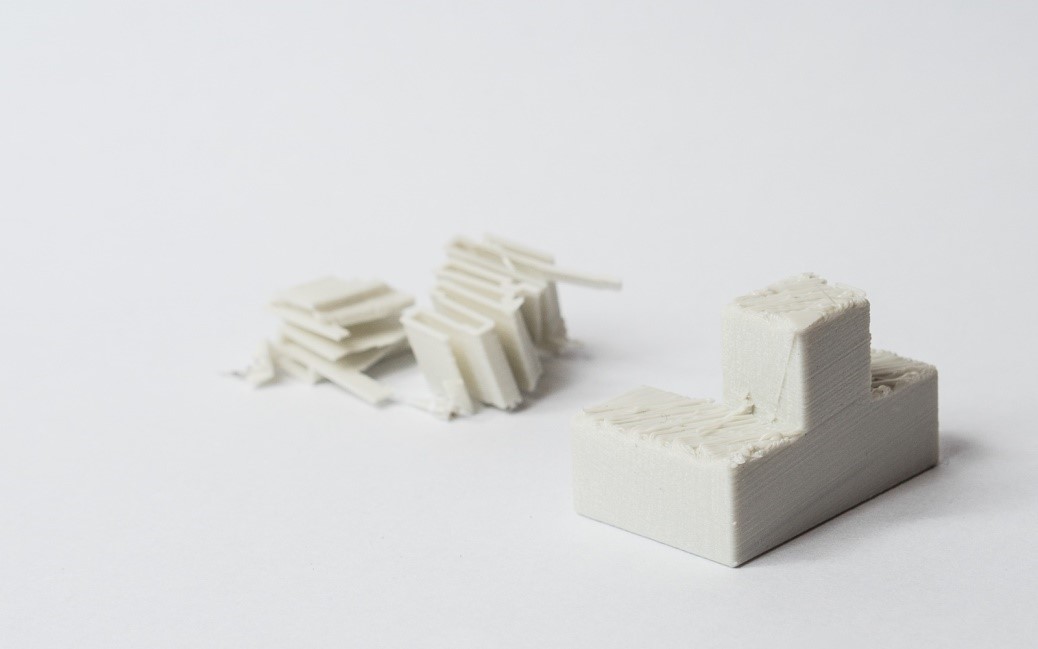
Figure: Result after media removal. ©3DHUBS
Need for Support Material
Despite the extra cost and extra printing time, in many cases support material is indispensable to achieve high-quality results.
Without support, the model may not be printable in FDM without seriously compromising quality and accuracy. Support material is essential to support protruding and complex parts of the model during printing, ensuring that the structure remains intact and conforms to design specifications.
In summary, although the use of supports brings additional challenges and costs, they are often crucial to the success of the 3D printing project. Careful planning and effective post-processing management can help mitigate problems and achieve a high-quality end result.
Two Types of Support in FDM 3D Printing
In FDM 3D printing, there are two main methods for creating media, each with its own characteristics and advantages:
-
Lattice or Accordion Support: This type of support is similar to a lattice or flat accordion structure. It is the most common method used in FDM printing. It provides a uniform and wide support, which is ideal for most prints. This type of support is effective in supporting large areas and protrusions, but can leave marks on the surface of the model, which require post-processing to remove.
-
"Tree-like" support: "Tree-like" support is characterized by a tree-like structure with thin branches extending toward the model. Although less common, this method is preferred by some FDM printers because of its less contact with the surface of the model. This can result in a better surface finish, reducing marks left by media and simplifying post-processing.
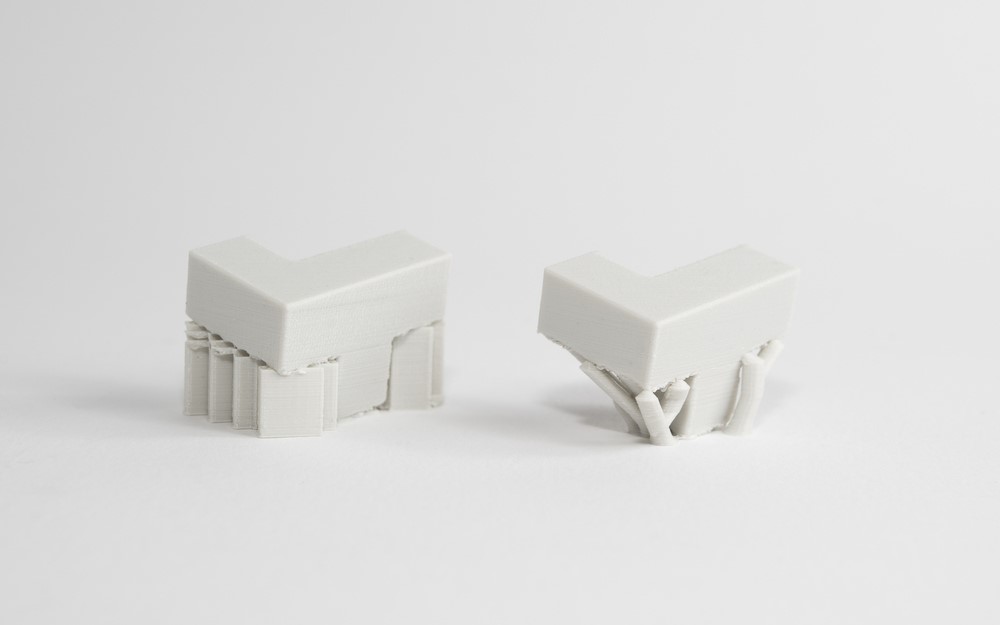
Figure: Example of lattice support on the left, tree support on the right. ©3DHUBS
Choosing the right type of support depends on the specific needs of the project and the characteristics of the model. Lattice support is generally more versatile and suitable for a wide range of prints, while "tree" support can offer significant advantages in terms of surface finish and reduced contact with the model. Understanding these options will help you make informed decisions to get the best results from your 3D printing.
Soluble Support
On 3D printers equipped with two print heads, soluble support materials can be used. These supports are made from a material that can be dissolved in a chemical solution without damaging the main model material.
-
Advantages: The use of soluble materials, such as PVA (polyvinyl alcohol), allows for a high-quality surface finish because the backing is completely removed without leaving any residue or marks on the model. This type of backing is particularly useful for models with complex geometries or fine details.
-
Example: An example of a printer using soluble support is the Ultimaker, which employs PVA as a support material. This material dissolves easily after printing, providing a clean, well-defined surface.
-
Considerations: Although the use of soluble media offers significant benefits in terms of surface finish, it can be an expensive and time-consuming solution. Complete solubility of the substrate requires an additional chemical treatment step, which can prolong the production process.
In summary, the choice of substrate type depends on the specific needs of the project and the capabilities of the 3D printer being used. Soluble solutions, although more expensive, can greatly improve the quality of the final model, while accordion and shaft supports offer cheaper alternatives with varying degrees of surface finish.
Final Considerations.
The use of supports in FDM 3D printing is essential to ensure model quality and accuracy, especially when dealing with complex geometries and significant protrusions. While bridging can reduce the need for supports for short distances, for more elaborate structures and angles beyond 45 degrees, supports become indispensable.
Although supports can bring challenges such as post-processing and additional costs, their strategic applications can optimize the quality of the final print. The choice between lattice, tree or dissolvable media depends on the specific needs of the project and the capabilities of the printer. Careful planning and informed use of media can significantly improve the end result, minimizing quality problems and associated costs.
©3DHUBS





